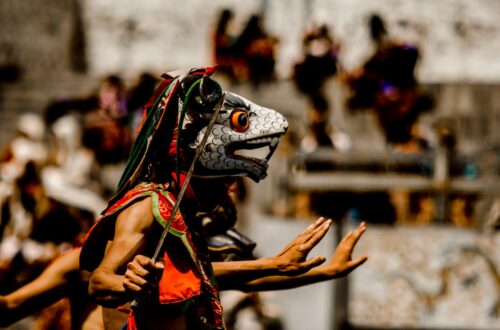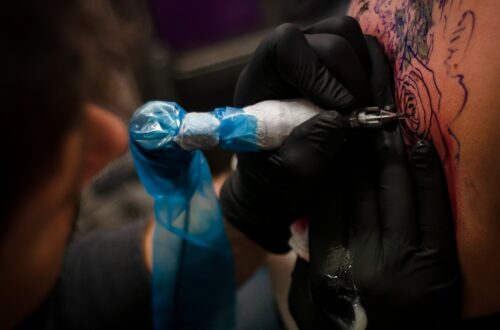Yellow daisies are a popular choice for gardeners due to their bright and cheerful appearance. Their vibrant yellow petals can instantly add a pop of color to any garden, making them a must-have for those looking to create a visually appealing outdoor space. Not only are yellow daisies visually stunning, but they are also easy to grow and maintain, making them a great addition to any garden, regardless of the gardener’s level of experience.
In this blog post, we will explore the different types of yellow daisies, how to plant and care for them, their symbolism, and more. Whether you are a seasoned gardener or just starting out, yellow daisies are a versatile flower that can enhance the beauty of your garden and bring joy to your outdoor space.
Key Takeaways
- Yellow daisies are a must-have for any garden due to their bright and cheerful appearance.
- There are different types of yellow daisies, each with their own unique characteristics and growing requirements.
- Plant and care for yellow daisies by providing them with proper soil, sunlight, and water, and protecting them from pests and diseases.
- Pair yellow daisies with companion plants such as lavender and salvia to create a beautiful and diverse garden.
- Use yellow daisies in floral arrangements to add a pop of color and texture, and learn about their cultural significance and symbolism in different cultures.
The Different Types of Yellow Daisies and Their Unique Characteristics
There are several types of yellow daisies, each with its own unique characteristics. One popular type is the Shasta daisy (Leucanthemum x superbum), which is known for its large white petals and bright yellow center. Shasta daisies are perennials that bloom from early summer to fall and can reach heights of up to three feet. They are low-maintenance plants that thrive in full sun and well-drained soil.
Another type of yellow daisy is the African daisy (Osteospermum), which is native to South Africa. African daisies come in a variety of colors, including yellow, and have long-lasting blooms that can last from spring to fall. They prefer full sun and well-drained soil and can be grown as annuals or perennials depending on the climate.
The golden marguerite (Anthemis tinctoria) is another type of yellow daisy that is native to Europe. It has bright yellow flowers with a daisy-like appearance and fern-like foliage. Golden marguerites are perennials that bloom from late spring to early summer and prefer full sun and well-drained soil.
How to Plant and Care for Yellow Daisies: Tips and Tricks
Planting yellow daisies requires proper soil preparation, watering, and fertilization. Before planting, it is important to prepare the soil by removing any weeds or debris and loosening it with a garden fork or tiller. Yellow daisies prefer well-drained soil, so adding organic matter such as compost or peat moss can help improve drainage.
When it comes to watering, yellow daisies prefer moist but not waterlogged soil. It is important to water them regularly, especially during dry periods, but be careful not to overwater as this can lead to root rot. Applying a layer of mulch around the base of the plants can help retain moisture in the soil and prevent weed growth.
Fertilizing yellow daisies is also important for their overall health and blooming. Using a balanced fertilizer with equal amounts of nitrogen, phosphorus, and potassium can help promote healthy growth and abundant blooms. It is best to fertilize yellow daisies in early spring before they start to bloom and again in mid-summer.
Companion Plants for Yellow Daisies: What to Pair Them With
Yellow daisies can be paired with other plants to create a beautiful and cohesive garden. One great companion plant for yellow daisies is lavender (Lavandula), which has purple flowers that complement the yellow blooms of the daisies. Lavender also attracts pollinators such as bees and butterflies, making it a great addition to any garden.
Another companion plant for yellow daisies is salvia (Salvia), which comes in a variety of colors including purple, pink, and blue. The vibrant colors of salvia can create a striking contrast with the yellow daisies, adding visual interest to the garden. Salvia is also a favorite of hummingbirds, making it a great choice for attracting these beautiful creatures to your garden.
Coreopsis (Coreopsis) is another great companion plant for yellow daisies. Coreopsis has bright yellow or orange flowers that complement the yellow daisies and create a cohesive color scheme in the garden. Coreopsis is also a low-maintenance plant that thrives in full sun and well-drained soil, making it an easy addition to any garden.
Yellow Daisies in Floral Arrangements: Creative Ways to Use Them
Yellow daisies can be used in a variety of floral arrangements, from bouquets to centerpieces. Their bright and cheerful appearance makes them a popular choice for adding a pop of color to any arrangement. One creative way to use yellow daisies in floral arrangements is to pair them with other flowers and foliage that complement their color.
For example, you can create a vibrant bouquet by combining yellow daisies with purple irises and blue delphiniums. The combination of these colors creates a visually striking arrangement that is sure to catch the eye. You can also add green foliage such as eucalyptus or ferns to add texture and depth to the arrangement.
Another creative way to use yellow daisies in floral arrangements is to create a monochromatic bouquet using different shades of yellow. You can combine different types of yellow daisies, such as Shasta daisies and African daisies, with yellow roses and sunflowers. This creates a cohesive and visually appealing arrangement that celebrates the beauty of yellow flowers.
The Symbolism of Yellow Daisies: What They Represent in Different Cultures

Yellow daisies have different meanings in different cultures and contexts. In general, yellow daisies are often associated with happiness, joy, and friendship. Their bright and cheerful appearance is often seen as a symbol of positivity and optimism.
In some cultures, yellow daisies are also associated with new beginnings and fresh starts. They are often given as gifts to celebrate milestones such as graduations, weddings, or the birth of a child. Yellow daisies can also be used to express gratitude and appreciation towards a friend or loved one.
In the language of flowers, yellow daisies are often associated with innocence and purity. They can be used to convey a sense of youthfulness and playfulness. Yellow daisies are also believed to bring good luck and fortune to those who possess them.
Yellow Daisies and Pollinators: How They Attract Bees and Butterflies
Yellow daisies are a great addition to any garden because they attract bees and butterflies. Bees and butterflies are important pollinators that play a crucial role in the reproduction of plants. By attracting these pollinators, yellow daisies help ensure the survival of other plants in the garden.
Bees are attracted to yellow daisies because they produce nectar, which is a source of food for bees. Bees are also attracted to the bright colors of the flowers, as they can see ultraviolet light that is invisible to humans. By visiting yellow daisies, bees transfer pollen from one flower to another, allowing for cross-pollination and the production of seeds.
Butterflies are also attracted to yellow daisies because they provide a source of nectar. Butterflies have long proboscises that allow them to reach deep into the flowers to extract nectar. By visiting yellow daisies, butterflies help pollinate the flowers and ensure their reproduction.
Yellow Daisies in Art and Literature: Their Cultural Significance
Yellow daisies have been featured in art and literature throughout history. They have been depicted in paintings, poetry, and other forms of artistic expression. In art, yellow daisies are often used to symbolize beauty, innocence, and purity. They are often portrayed as delicate and ethereal flowers that evoke a sense of tranquility and serenity.
In literature, yellow daisies are often used as a metaphor for happiness, joy, and new beginnings. They are often associated with spring and the renewal of life. Yellow daisies are also used to convey a sense of optimism and hope in the face of adversity.
One famous example of yellow daisies in art is Vincent van Gogh’s painting “Vase with Twelve Sunflowers.” The painting features a bouquet of sunflowers, including yellow daisies, arranged in a vase. The vibrant colors and bold brushstrokes capture the beauty and energy of the flowers, making them a focal point of the painting.
Common Diseases and Pests That Affect Yellow Daisies: How to Prevent and Treat Them
Yellow daisies are susceptible to certain diseases and pests that can affect their health and blooming. One common disease that affects yellow daisies is powdery mildew, which is a fungal infection that appears as a white powdery substance on the leaves and stems. To prevent powdery mildew, it is important to provide good air circulation around the plants by spacing them properly and removing any weeds or debris.
Another common pest that affects yellow daisies is aphids, which are small insects that feed on the sap of plants. Aphids can cause stunted growth, distorted leaves, and reduced blooming in yellow daisies. To prevent aphids, it is important to regularly inspect the plants for signs of infestation and remove any affected leaves or stems.
If yellow daisies do become infected with powdery mildew or infested with aphids, there are several treatment options available. For powdery mildew, you can use a fungicide spray specifically designed to treat fungal infections. For aphids, you can use insecticidal soap or neem oil to kill the insects and prevent further infestation.
Brighten Up Your Garden with Yellow Daisies All Year Round
In conclusion, yellow daisies are a beautiful and easy-to-grow flower that can brighten up any garden. Their bright and cheerful appearance, combined with their ease of care, makes them a must-have for gardeners of all levels of experience. Whether you are looking to add a pop of color to your garden or create a vibrant floral arrangement, yellow daisies are a versatile flower that can enhance the beauty of any outdoor space.
We encourage readers to add yellow daisies to their garden and enjoy their beauty all year round. Whether you choose to plant them alongside other flowers or use them in floral arrangements, yellow daisies are sure to bring joy and happiness to your outdoor space. So go ahead and plant some yellow daisies in your garden and watch as they brighten up your surroundings with their vibrant yellow petals.
If you’re a fan of yellow daisies, you’ll definitely want to check out this fascinating article on the Tech Audios website. They have a great piece that explores the various meanings and symbolism behind different colors of daisies, including the vibrant yellow ones. Discover the hidden messages and cultural significance associated with these beautiful flowers by clicking here.
FAQs
What is a yellow daisy?
A yellow daisy is a type of flower that belongs to the Asteraceae family. It is characterized by its bright yellow petals and a dark center disk.
What are the different types of yellow daisies?
There are several types of yellow daisies, including the African Daisy, the Shasta Daisy, the Oxeye Daisy, and the Golden Marguerite.
Where can yellow daisies be found?
Yellow daisies can be found in various parts of the world, including North America, Europe, and Africa. They are commonly found in meadows, fields, and gardens.
What is the meaning of a yellow daisy?
A yellow daisy is often associated with joy, happiness, and friendship. It is also believed to symbolize new beginnings and fresh starts.
How do you care for yellow daisies?
Yellow daisies require well-drained soil and plenty of sunlight. They should be watered regularly, but not overwatered. Deadheading the flowers can help promote new growth and prolong blooming.





